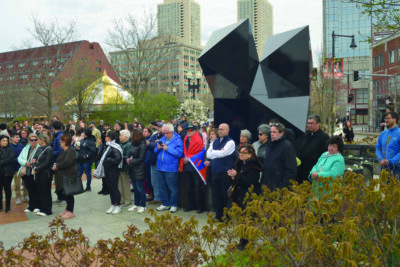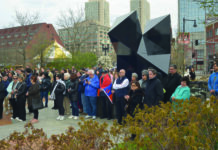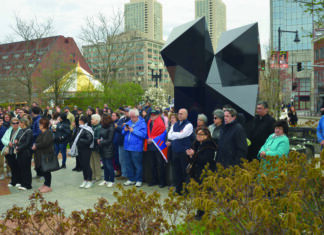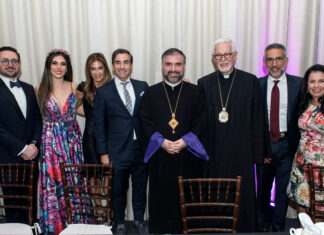By Aram Arkun
Mirror-Spectator Staff
NEW YORK — Literary critic Marc Nichanian, currently a visiting professor of cultural studies at Sabançi University in Istanbul, and formerly at Columbia University, gave a lecture titled “What Image for the Death of the Witness?” at the Pratt Manhattan Gallery here on February 3. This talk was presented in connection with the “Blind Dates: New Encounters from the Edges of a Former Empire” exhibition on the same day.
To understand Nichanian’s talk, it is necessary to be familiar to a certain degree with European philosophy and in particular debates over the past few decades concerning the possibility and limits to “representation” in various forms of genocides, mass murders and similar catastrophic events. Nichanian in his previous works, in particular the volume La Perversion Historiographique (translated into English by Gil Anidjar as The Historiographic Perversion, 2008), came down emphatically on the side of those who do not believe that it is possible to portray genocides and similar such events in literature. He continued in this vein at this lecture, examining what an image is and its relationship to the catastrophe and survival.
After a warm introduction by Neery Melkonian, the director of the Blind Dates project, Nichanian gave the outline of his talk, stressing his view that a catastrophic event could not be accounted for through historiography because of its odd temporal structure — not everything has yet happened, so that it will only be an event in the future. Secondly, historiography is based on witnessing, but because the catastrophic event is the death of the witness, it cannot be written about historically.
Nichanian spoke in front of an artwork by Aram Jibilian and Aaron Mattocks using masks to present Arshile Gorky, or his “ghost,” at Gorky’s Connecticut home. The idea of a mask covering the absence of what it is supposed to be covering led Nichanian to the concept of the death mask as the image of the image.
Nichanian then quoted from Siegfried Kracauer, a German-Jewish theoretician of mass culture, who said that actual horrors, like the Gorgon Medusa, paralyze men with blinding fear, and so cannot be looked at directly. We can only look at images of them. The film screen (perhaps like the death mask) is thus Athena’s polished shield, allowing us to see, for example, events in Nazi concentration camps. Nichanian explained that the image has an apotropaic function but Krakuaer also gives it a redemptive component. It redeems the real, the horror, by making it bearable and thus accessible.








